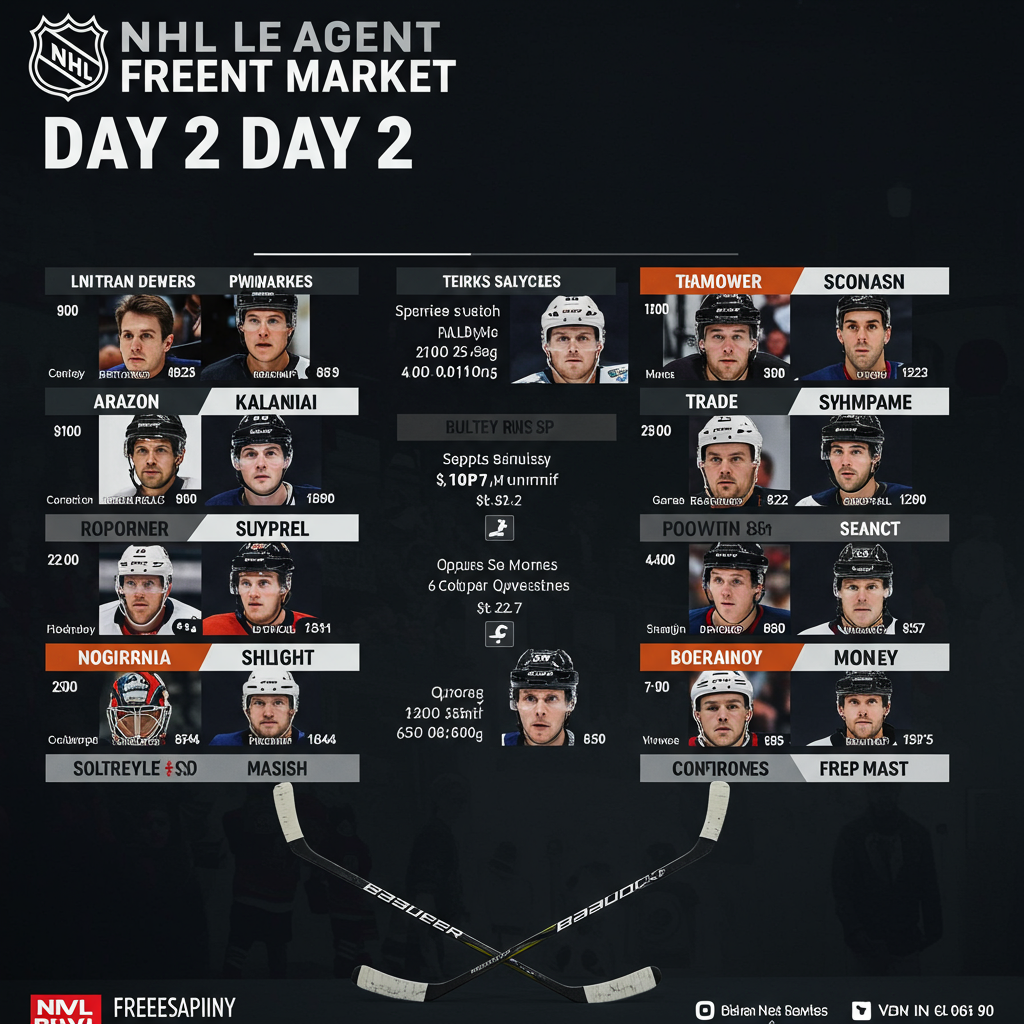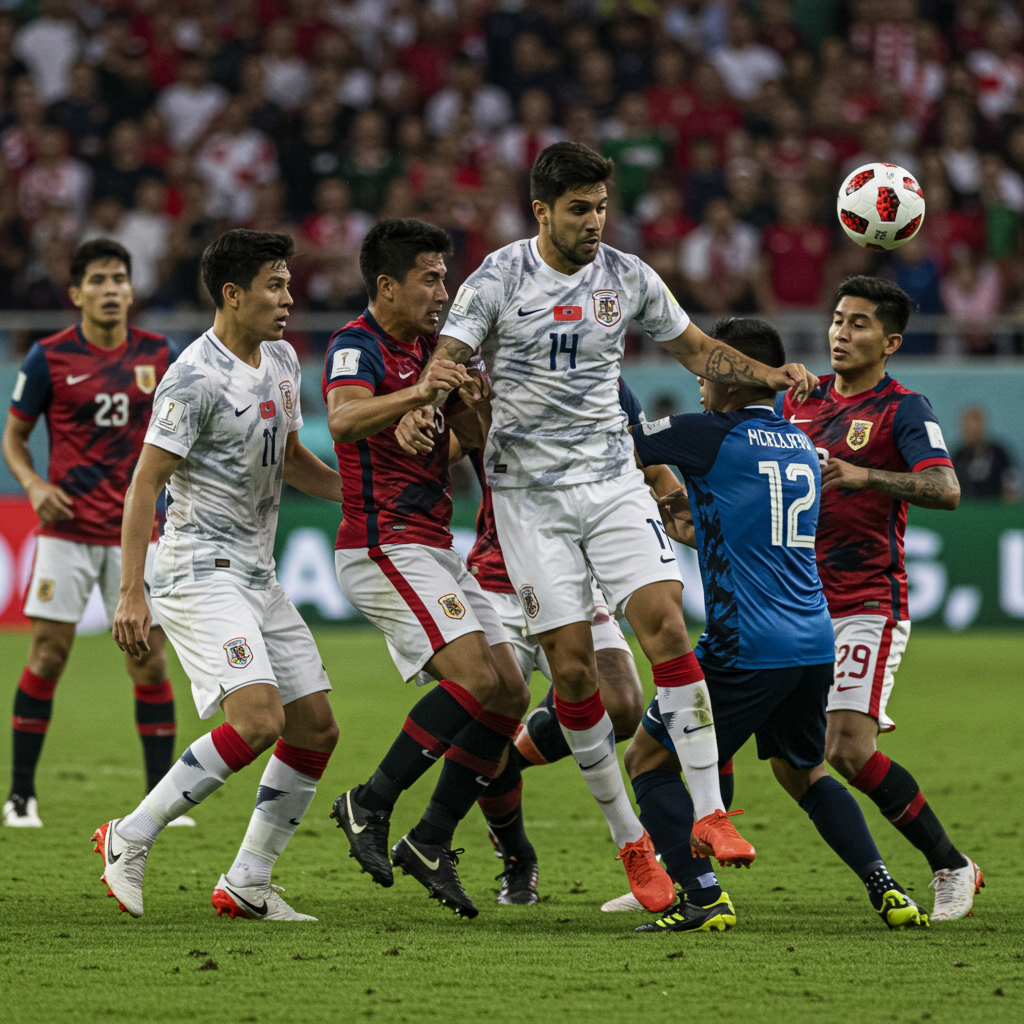Day 1 of NHL free agency unfolded differently this year, notably lacking the typical flurry of blockbuster signings that often define the initial hours. While motivated teams were certainly active, an already limited pool of unrestricted free agents saw its top talent quickly evaporate or sign extensions just before the July 1 deadline.
This left the market entering Day 2 without many of the true game-changing superstars. Instead, teams are now navigating what remains – a collection of intriguing names, primarily offering valuable depth, specialized skills, and potential supporting roles rather than core lineup anchors. Expectations for the remaining free agents must be tempered; these are generally not players who will single-handedly drive a top line or anchor a first defense pair, with a few notable exceptions.
The State of the Post-Day 1 Free Agent Market
The current free agency landscape reflects a shift influenced by the league’s economic climate. Unlike recent years under a relatively flat salary cap, the 2025 market is transitioning into an era of projected cap growth. This has subtly changed how teams approach player acquisition. Fewer players were bought out during the initial window, and significantly fewer notable restricted free agents went unqualified, as teams had more financial flexibility to retain talent.
This dynamic contributes to a shallower secondary market compared to what teams might have relied on for depth in prior offseasons. The players still available represent the top tier of this modified pool, offering specific skills that could address team needs or provide value at a potentially more favorable contract.
Intriguing Talent Still Seeking Homes
Despite the early rush and the overall market limitations, several compelling players remain available. Here’s a look at some of the most prominent names and what they could bring to a roster:
Nikolaj Ehlers (Left Winger, 29)
Widely considered the most impactful player remaining, Ehlers possesses a highly coveted, game-breaking offensive skillset. His incredible speed, creativity, and high-end skill make him a dynamic puck transporter. Ehlers excels at driving dangerous zone entries and generating scoring chances off the rush seemingly at will, capable of blowing games wide open with pace and finesse.
He has consistently produced in the 25-goal, 60-65 point range throughout his career. However, analysis suggests his offensive output has been suppressed by surprisingly limited ice time in Winnipeg, averaging less than 16 minutes per game over the last three seasons. Despite this, he ranks impressively among NHL players for five-on-five points produced per hour during that span. When given more opportunity, such as in 2021-22 when he averaged 18 minutes and played at a 72-point pace, his production surged. A team willing to deploy Ehlers as a genuine top-six, or even first-line caliber, player could potentially unlock 30 goals and 70 points from him. Durability and a less consistent playoff track record are concerns, but otherwise, he checks every box for teams needing significant offensive punch.
Pius Suter (Forward, 29)
Perhaps one of the league’s most underrated players, Pius Suter brings exceptional two-way intelligence and versatility. While he may be overlooked due to being slightly undersized (5-foot-11), possessing below-average foot speed, and lacking flashy offensive highlights, his value lies in being a “coach’s dream.” Suter provides excellent defensive results and is an outstanding penalty killer.
He has demonstrated the ability to score 15-20 goals consistently, even hitting 25 in 2023-24 (though with an elevated shooting percentage). Thriving as a middle-six center, his high offensive intelligence also allows him to effectively complement star players when moved to the wing. For instance, he successfully played on Vancouver’s top line with J.T. Miller and Brock Boeser, noticeably improving their underlying numbers when sharing the ice. Suter is a low-maintenance, dependable top-nine forward capable of filling almost any role asked of him.
Dmitry Orlov (Defenseman, 33)
Historically a defenseman capable of single-handedly driving success on a second pair with his puck-moving and well-rounded two-way game, Orlov remains a useful veteran. He was a steady second-pair option for stretches last season. However, at 33, his profile suggests he is now more suited as a No. 4 or No. 5 defenseman moving forward.
Concerns emerged around his play in the playoffs, where his team controlled significantly less of the expected and actual goals when he was on the ice at five-on-five. It’s also noted that certain team systems, like the one in Carolina where he spent time, can sometimes flatter defensemen’s performance. While still possessing utility, Orlov would likely benefit from being paired with a quality partner and insulated from the most challenging matchups to be most effective.
Jack Roslovic (Forward, 28)
An offense-first player who can be both dynamic and occasionally frustrating, Roslovic possesses the skating, playmaking IQ, and high-level skill to create dangerous zone entries and scoring chances. He’s coming off a 22-goal season and is an efficient producer of even-strength offense, flashing top-six potential at times.
The challenge with Roslovic is the inconsistency; stretches of offensive brilliance can be offset by periods of invisibility, turnovers, and defensive lapses. Given that his primary contribution is offense, these defensive shortcomings can be problematic. On the right team, potentially in a sheltered scoring role that maximizes his offensive toolkit while minimizing defensive exposure, Roslovic could provide significant secondary offense.
Brent Burns (Defenseman, 40)
At 40 years old, Brent Burns is no longer the dominant offensive force he once was. His scoring dipped significantly last season, totaling 29 points. Despite the decline in offensive production, Burns still handled a substantial workload, averaging 21 minutes on his team’s top defense pair.
His effectiveness at this age likely benefited from playing alongside a high-caliber partner and within a system known for insulating defensemen. Moving forward, his usage would likely need to be adjusted elsewhere. However, Burns can still provide quality minutes at even strength and contributes effectively on the penalty kill, making him a valuable veteran option for teams needing defensive depth and experience.
Victor Olofsson (Winger, 29)
Olofsson’s calling card is his powerful shot, which makes him a dangerous scorer, particularly valuable for teams looking to boost their power play. He has reached the 20-goal mark three times in his career and is coming off a respectable season where he scored 15 goals and 29 points in 56 games.
He is generally viewed as a one-dimensional offensive player, with defensive consistency being a notable challenge. Therefore, finding the right team fit is crucial for Olofsson. He would likely thrive in a situation where he can be sheltered at even strength, perhaps playing alongside linemates who can cover defensively, allowing him to focus on utilizing his scoring touch, especially on the man advantage.
Anthony Beauvillier (Left Winger, 28)
A reliable bottom-six winger who offers positional flexibility and can move up the lineup when necessary. Beauvillier is recognized for his speed and defensive reliability. While he can experience long stretches where his offensive impact is minimal, he has shown the ability to score, hitting the 15-goal mark six times in his career.
Beauvillier also possesses a solid track record in the playoffs, contributing six points in ten games during the most recent postseason. For teams seeking a dependable, defensively conscious winger who can provide energy and chip in offensively periodically, Beauvillier represents a solid addition.
Matt Grzelcyk (Defenseman, 31)
Teams looking for a third-pair, left-side defenseman with puck-moving capabilities and the potential to help the power play should consider Grzelcyk. The undersized defender struggled defensively and made some noticeable errors in a role where he was asked to play over 20 minutes per night.
However, if placed in a more sheltered role with lighter minutes and matchups, his five-on-five performance is likely to improve significantly. When combined with his offensive output, such as the 40 points he registered last season, he can be a highly useful player in the right context. His value comes from finding the appropriate usage to leverage his offensive skills while mitigating defensive exposure.
Mason Appleton (Forward, 29)
In contrast to some of the more offense-oriented wingers still available, Mason Appleton fits the mold of a prototypical third-line grinder. He excels defensively in a checking role, possesses an above-average 6-foot-2 frame, and is effective at winning puck battles, particularly on the forecheck.
While he is coming off a statistically down year offensively (10 goals, 22 points), he had a strong offensive showing the season prior (14 goals, 36 points). Appleton provides a safe, high-floor option for teams needing a reliable, defensively responsible third-line winger with size and tenacity.
Frequently Asked Questions
Frequently Asked Questions
What type of free agents are primarily available on Day 2 of NHL free agency?
After the initial rush on July 1, the remaining free agent market primarily consists of players viewed as solid supporting cast members, depth options, or specialists rather than top-tier difference-makers. While a few potentially high-impact players like Nikolaj Ehlers remain, most available talent is best suited for middle-six forward roles, third-pair defense, or specific situations like power-play contributions.
Where do teams typically plan to deploy the players remaining in the Day 2 market?
The potential deployment roles for these players vary based on their specific skill sets. Forwards might slot into middle-six (3rd line) or bottom-six (4th line) positions, potentially seeing time higher up due to injuries or specific matchups. Defensemen are mostly viewed as third-pair options who might contribute to special teams. Their value often comes from filling specific needs like defensive reliability, penalty killing, or secondary scoring.
What value are NHL teams seeking by signing players from this group after Day 1?
Teams signing these free agents are typically looking to fill specific roster holes, add organizational depth, provide veteran experience, or find value in players whose price or term expectations may be lower than Day 1 signings. This secondary market allows teams to address needs without committing to potentially burdensome long-term, high-salary contracts, adding useful components to round out their rosters.
Finding Value in the Secondary Market
While the biggest names may be off the board, the remaining pool of unrestricted free agents offers significant value for teams that understand how to leverage specific skill sets. Players like Ehlers provide high-end offensive potential that could transform a line, while others such as Suter and Appleton offer reliable two-way play and defensive responsibility crucial for depth and energy lines. Veterans like Burns and Orlov can still contribute valuable minutes in defined roles, and specialists like Olofsson and Grzelcyk can boost special teams or provide targeted offensive support.
Teams that missed out on their initial Day 1 targets or are strategically prioritizing cap flexibility, like the Winnipeg Jets who lost key players but retained significant cap space, may look to the trade market for bigger additions. However, the Day 2 free agent market provides a practical opportunity to solidify rosters, add needed depth, and potentially uncover players who can exceed expectations in the right environment. The search for value continues beyond the initial free agency splash.
Word Count Check: 1303


